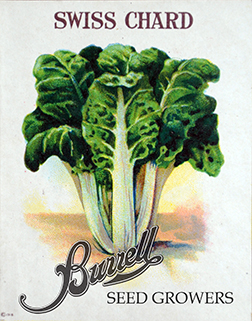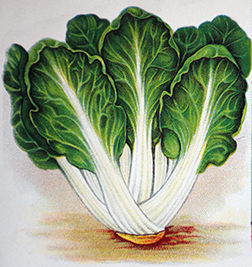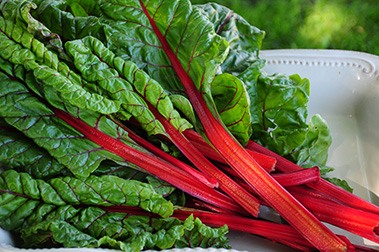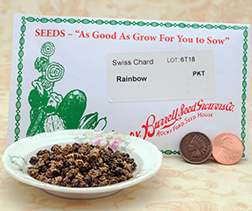Growing Swiss Chard.
Swiss Chard is an amazing superfood that surpasses even kale’s nutritional content and health benefits. It contains a unique flavonoid, Syringic acid, which helps regulate blood sugar levels, especially valuable for diabetics. Swiss chard can go anywhere spinach can go in the culinary world. Sautéed in olive oil and seasoned with garlic, salt and pepper, chard, also known as silver beet, makes a flavorful side dish. Swiss chard pizza is decadent. Eggs poached in a Swiss chard nest and topped with Pecorino Romano is an Italian breakfast specialty. A prolific producer, chard should grace your table often.
While it is a cool season green, it can take a bit more heat than spinach. The flavor is better in cool weather and with regular waterings. Sow our heirloom Swiss chard seeds 2 to 3 weeks before the last expected spring frost. Plant 1/2″ to 1″ deep, 4″ to 6″ apart in rows 1 1/2′ to 3′ wide. Swiss chard requires rich, loamy soil, even moisture and full sun, but will tolerate some light shade. Harvest small leaves for salads and larger ones to cook.
Good companion crops are root crops, beans, broccoli, brussels sprouts, cabbage, cauliflower, Chinese cabbage, kale, kohlrabi, onions and mint.
Growing Swiss Chard.
Swiss Chard is an amazing superfood that surpasses even kale’s nutritional content and health benefits. It contains a unique flavonoid, Syringic acid, which helps regulate blood sugar levels, especially valuable for diabetics. Swiss chard can go anywhere spinach can go in the culinary world. Sautéed in olive oil and seasoned with garlic, salt and pepper, chard, also known as silver beet, makes a flavorful side dish. Swiss chard pizza is decadent. Eggs poached in a Swiss chard nest and topped with Pecorino Romano is an Italian breakfast specialty. A prolific producer, chard should grace your table often.
While it is a cool season green, it can take a bit more heat than spinach. The flavor is better in cool weather and with regular waterings. Sow our heirloom Swiss chard seeds 2 to 3 weeks before the last expected spring frost. Plant 1/2″ to 1″ deep, 4″ to 6″ apart in rows 1 1/2′ to 3′ wide. Swiss chard requires rich, loamy soil, even moisture and full sun, but will tolerate some light shade. Harvest small leaves for salads and larger ones to cook.
Good companion crops are root crops, beans, broccoli, brussels sprouts, cabbage, cauliflower, Chinese cabbage, kale, kohlrabi, onions and mint.






